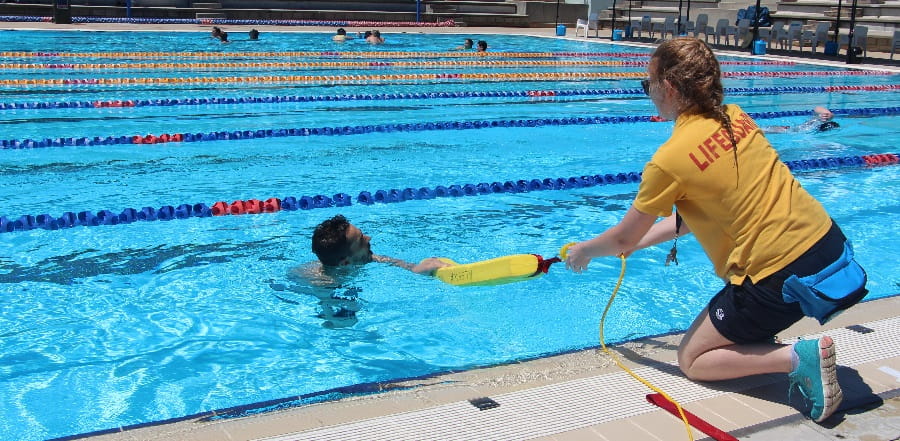
The vast majority of fatal and non-fatal drownings occur in natural and unsupervised water bodies, as patrons often go unaware of the potential risks. In Australia during the 2021-22 financial year, drowning was most likely to occur in open water locations (40.1%) and home swimming pools (17.1%).
You may be around various water bodies in the warmer months. Being able to identify risks and dangers in different aquatic environments is the first step towards drowning and injury prevention in Australia.
Pools
Your local or private swimming pool can be a great place to enjoy a swim and wind down. Although pools may appear safe, there are many potential hazards which patrons are often unaware of. Such dangers include:
- Large crowds (particularly with small children)
- Slippery surfaces
- Different areas of depth
- Unsupervised pools (hotels, resorts, gyms, etc)
- Water features and attractions (slides, wave pools, fountains etc)
Spas
Spas are not only relaxing but also have proven health benefits and should be a fun, safe and enjoyable place to relax after a long day. It is important to keep watch and identify potential hazards around spas which may lead to an injury or drowning.
The dangers to be aware are the same as a pool environment. To increase water safety all spas should be fitted with an emergency switch and therefore be compliant with Australian Standards.
Rivers, Lakes and Dams
Rivers, lakes and dams can present many hazardous conditions and these hazards are often not visible to the untrained eye. Currents often change with the tides, riverbeds are often uneven and crumble with pressure, and objects are often submerged and not visible. Other dangers to be aware of include:
- Changing currents
- Submerged items such as rocks and logs
- Varying water depths
- Crumbling and uneven banks
- Cold water
- Waves
Beaches and Oceans
In Australia we are privileged to be surrounded by water and arguably some of the world’s most beautiful beaches. A fun place to spend the day, the beach is perfect destination year-round, however there are potential dangers which could cause a fatality. Such include:
- Waves
- Tidal currents
- Rip currents
- Drop offs
- Water animals such as sharks or jellyfish
- Unclear water
As the weather continues to warm and more and more people continue to seek relief from the heat in a nearby body of water, the drowning risk also continues to rise. Being aware and able to identify potential dangers in different water bodies could be the difference between life or death.